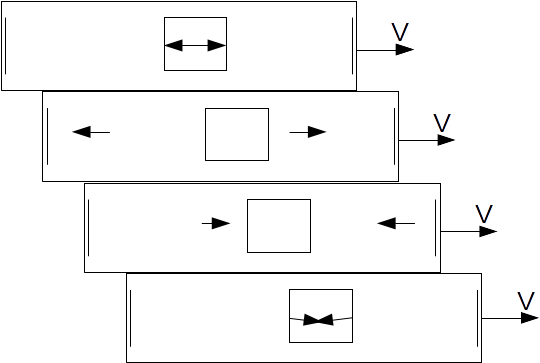If two events happen at the same time we call them simultaneous. Simultaneous events are not simultaneous fpr everyone however. More precisely, using the
Galilean Transformation, all observers agree that simultaneous events are simultaneous, and using the Lorentz Transformation, observers may differ on whether or no events are simultaneous.
Consider a person standing at the centre of a moving closed laboratory. In the centre is a pulse generator, at on the walls of the room are reflectors. Light pulses are generated at the same time, hot the reflectors at the same time and arrive back at the generator at the same time. The arrival of the pulses at the generator is simultaneous for the scientists in the laboratory.
For a stationary person outside the laboratory, so the laboratory is moving relative to them, the front of the carriage appears to be moving away from the pulse, and the back of the carriage appears to be moving towards the pulse. The reflection will happen first at the back of the laboratory. These events, reflection from the mirrors on the walls, are simultaneous inside the laboratory, but not for the scientist outside.
The arrival of the light at the generator at the centre of the laboratory is simultaneous for both observers. Why? Both events - the arrival of the light pulses at the centre of the train - happen at the same time in the same place for one observer, so must happen at the same time in the same place for the other.
Both observers will agree on simultaneity if two events happen at the same time in the same place, but may not agree if they do not.


